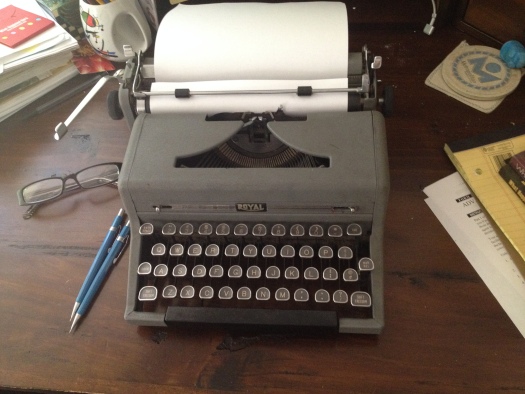By Lisbeth Coiman
As part of our ongoing effort to encourage women to submit to top tier literary journals, Women Who Submit has put together a monthly submission call round up, hoping women writers find it useful and come back to it again and again. For our first list, we have included 19 publications with under $20 submission fees, and one publication with a slightly higher fee.
General
- The Indiana Review
Reading Period: Opening date not listed – March 10
Submission guidelines
What They Like: They’ve received a ton of stories about cancer, so he could do without seeing any of those for a while and would prefer to see stuff that’s “different.”
- James Franco Review
Deadline: March 31
Submission guidelines
Genre: Poetry, fiction, creative non-fiction
Rotating Editors
Blind reading
- The Masters Review
Reading Period: January 15 – March 31
Submission guidelines
What They Like: Emerging fiction from new writers. They run year-round New Voices online editions and additional contests judged by the magazine editors and other writers.
- The Cincinnati Review
Reading Period: August 15 – April 16
Submission guidelines
What They Like: Realistic fiction, some humorous pieces
Responses: One submission, one form rejection
- Room Magazine
Deadline: for issue 39.4 : April 30
Submission guidelines.
Cost: $0
Featured: Sookfong Lee and Betsy Warland
Editor: Chelene Knight
Canadian publication. Recommended to read a couple of issues to get the feel of what they publish @ www.roommagazine.com/magazine. They are interested in poetry, short stories, and creative non-fiction by women. They pay from CA$ 50 up to CA$120 depending on the number of pages. They accept one submission per genre per quarter and publish 80 to 100 pieces from a 2000 submissions slush pile.
- The Sun Magazine
Deadline: Open Call
Submission guidelines
Cost: $5
Hardcopy submissions only sent to
Editorial Department
The Sun
107 N. Roberson St.
Chapel Hill, NC 27516
They publish personal essays although they also accept interviews, fiction and poetry. Your immaculate personal essay competes against thousands of other great essays in the slush pile every month. They take up to six months to reply. The nicely printed rejection letters make for a good keepsake too. They pay from $100-200 for poetry up to $2000 for interviews. SASE required.
It is highly recommended to read at least a couple of issues to get a feel for the magazine content and what the editors expect.
- Arcadia Magazine
Deadline: Open Call
Submission guidelines
Cost: $3
Genre: Fiction, Poetry, Non-fiction, drama, and blog
Query before submitting. Online submission only.
- Red Light Lit
Deadline: Open Call
Submission guidelines
Genre: Poetry, prose, and art for events and for the magazine.
Editor: Jennifer Lewis
Submit to: Jennifer@redlight.com also
Oakland based reading series and quarterly journal since 2013 publishes emerging writers and artists who delve in the senses with sophistication, humor, and wit.
Short Fiction Only
- The Paris Review
Reading Period: All year, but do not accept more than four submissions per year
Submission guidelines
What They Like: They seem a fair bit eclectic
10. The Atlantic
Reading Period: All year
Submission guidelines
What They Like: I’ve seen a little bit of everything, but they seem to prefer realism
11. The New Yorker
Reading Period: All year
Submission Guidelines: http://www.newyorker.com/about/contact
What They Like: I’ve seen a little bit of everything, from realism to magical realism to a few other types of fiction, but not too much “genre”
Responses; If you haven’t heard from them within three months, you’re just supposed to assume you’re rejected
- Glimmer Train
Reading Period: Open year-round, but with general submissions in January, May, and September
Submission guidelines
What They Like: Rural stories, coming-of-age stories
- The Mid-American Review
Reading Period: Open year-round
Submission guidelines
What They Like: I’ve read everything from the fantastical to the dystopic to the realistic to the WTF-how-did-this-get-published, so they seem rather eclectic
- The Missouri Review
Reading Period: Open year-round, as far as I can tell, but don’t quote me on that
Submission guidelines
What They Like: I haven’t been overly impressed with what I’ve read, but they seem to like realistic, rural, small-scale stories
Anthologies
- Tayen Lane Publishing
First Annual Articulated Press Short Story Anthology
Deadline: March 31
Cost: $0
Submission guidelines
Editors: Nora Boxer and Kelly Luce
Submit to
Chosen contributors receive $100, publication, and two hardcovers, two softcovers, and an eBook edition.
Procyon Science Fiction Anthology
Deadline: March 31
Cost: $0
Editor: Jeanne Thornton
Chosen contributors receive $100, publication, and two hardcovers, two softcovers, and an eBook edition.
Submit to
- Ideate Publishing
Where is My Tiara? Anthology
Deadline: March 31
Genre: Short fiction
Theme: Stories that feature multilayered female protagonist that illuminate and celebrate the many facets and complexities of being a woman
Submit to
Selected stories will receive a copy of the anthology and a stipend of $100.00
- Masters Review
Anthology Volume V
Deadline: March 31
Submission guidelines
Cost: $20
Genre: Fiction, literary non-fiction (7000 words)
Prize: $500
This yearly anthology is composed of 10 stories by emergent writers. Last year, the Masters Review won the Silver Medal for Best Short Story Collection through the INDIEFAB Awards. (Among the past judges: Lauren Groff and Lev Grossman; current judge is Amy Hempel.)
Contests
- James Jones Fellowship Contest
Deadline: March 15, 2016
Submission guidelines
Cost: $33
Genre: Fiction (novels) only.
Prize:
- $10,000
- $1,000 x 2
Submit to: James Jones First Novel Fellowship
c/o M.A./M.F.A. in Creative Writing
Wilkes University
84 West South St.
Wilkes-Barre, PA 18766
Our most expensive publication on the list. This contest is seeking emergent fiction writers who have yet to publish a novel. The award honors the cultural and social values exemplified by late James Jones, author of From Here to Eternity. Contestants can’t have previously published novels, but are eligible with published short fiction and non-fiction work.
- Writers Community of Simcoe County
Word by Word – WCSC Short Fiction Contest
Deadline: March 31
Submission guidelines
Cost: CAN$15
US$20
Judge: Literary Agent, Hilary McMahon of Westwood Creative Artists
Award: Publication on WCSC website and
- $500 and commentary by Ms. McMahon
- $250
- $100
- Solstice, A Magazine of Diverse Voices
Solstice is a tri-quarterly magazine, with a response time of two to four months. It publishes fiction, non-fiction (essays and memoirs), poetry, and photography. It publishes both emergent and established writers of diverse backgrounds.
Solstice Annual Literary Contest
Deadline: April 20, 2016
Submission guidelines
Cost: $18
$500 Stephen Dunn Prize in Poetry
Judge: Richard Blanco
$1000 Fiction Prize
Judge: Celeste Ng.
$500 Non-Fiction Prize
Judge: Michael Steinberg
Winners will be published in the Summer Award Issue in early August.
This is all for now. Hope to see you back next month, when we will try to compile another list of journals with plenty of details to help you plan and budget your submissions.
 Lisbeth Coiman is a bilingual writer standing (unbalanced) on a blurred line between fiction and memoir. She has wandered the immigration path from Venezuela to Canada, to the US, and now lives in Oakland. Her upcoming memoir The Shattered Mirror celebrates friendship among women and draws attention on child abuse and mental illness. She also writes short fiction and poetry, and blogs “irregularly” at www.gingerbreadwoman.org
Lisbeth Coiman is a bilingual writer standing (unbalanced) on a blurred line between fiction and memoir. She has wandered the immigration path from Venezuela to Canada, to the US, and now lives in Oakland. Her upcoming memoir The Shattered Mirror celebrates friendship among women and draws attention on child abuse and mental illness. She also writes short fiction and poetry, and blogs “irregularly” at www.gingerbreadwoman.org





 By Lisbeth Coiman
By Lisbeth Coiman Lisbeth Coiman is a bilingual writer standing (unbalanced) on a blurred line between fiction and memoir. She has wandered the immigration path from Venezuela to Canada, to the US, and now lives in Oakland. Her upcoming memoir The Shattered Mirror celebrates friendship among women and draws attention on child abuse and mental illness. She also writes short fiction and poetry, and blogs “irregularly” at
Lisbeth Coiman is a bilingual writer standing (unbalanced) on a blurred line between fiction and memoir. She has wandered the immigration path from Venezuela to Canada, to the US, and now lives in Oakland. Her upcoming memoir The Shattered Mirror celebrates friendship among women and draws attention on child abuse and mental illness. She also writes short fiction and poetry, and blogs “irregularly” at 
 I’m giving myself ten years to focus my efforts on “Books & Babies.” I even created one of my elaborate vision boards filled with cut-outs from Poets and Writers and parenting magazines evoking the parent/writer life.
I’m giving myself ten years to focus my efforts on “Books & Babies.” I even created one of my elaborate vision boards filled with cut-outs from Poets and Writers and parenting magazines evoking the parent/writer life. Li Yun Alvarado is the author of
Li Yun Alvarado is the author of 



